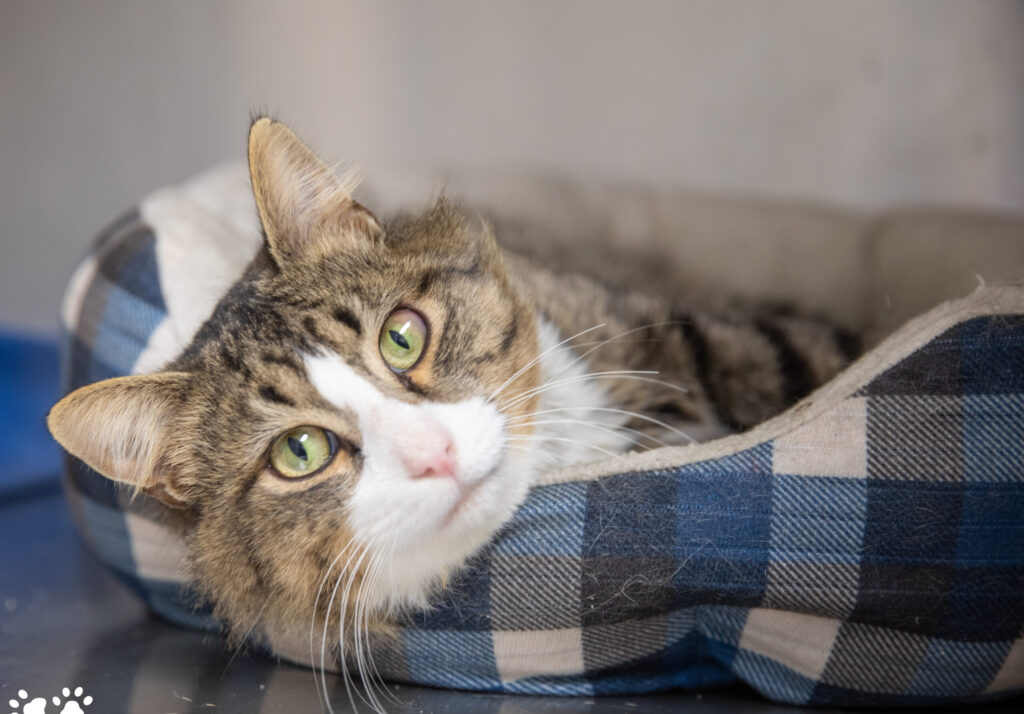Feline Immunodeficiency Virus (FIV) and Feline Leukemia Virus (FeLV)

Facts About FIV Positive Cats
- FIV is a slow virus that affects a cat’s immune system over a period of years.
- FIV is a cat-only disease. It cannot be spread to humans or other non-felines.
- FIV itself does not shorten a cat’s life-span. But, because FIV affects a cat’s immune system, it is more difficult for an FIV+ cat to fight off disease. An FIV+ cat requires a diligent owner—someone who will take her to the vet twice a year for check ups and, immediately, at the first sign of illness.
- FIV is spread through serious, penetrating bite wounds. This type of bite wound is seen most often in feral, intact tomcats.
- The virus can spread through blood transfusions.
- Sometimes, a FIV+ mother may infect her kittens while they’re in the womb or through her milk after they are born.
- FIV cannot spread casually between cats, such as in water or food bowls, or in litter boxes.
- Cuddling, playing and other forms of casual physical contact do not spread the virus.
- The FIV virus was discovered in 1986. Before then, FIV positive cats and non-FIV cats often lived together peacefully.
- FIV+ cats are no different from other cats, often living long and healthy lives, never showing any symptoms.
Facts About Feline Leukemia Virus (FeLV) Positive Cats
- FeLV is a retrovirus that affects a cat’s ability to fight off infection.
- FeLV is a cat-only disease. It cannot be spread to humans or other non-felines.
- Because FeLV affects a cat’s immune system, it is difficult for an FeLV+ cat to fight off disease. An FeLV+ cat requires a diligent owner—someone who will take her to the vet twice a year for check ups and, immediately, at the first sign of illness.
- FeLV is not airborne; it is transmitted through close continuous contact among cats.
- Prolonged contact or a serious, penetrating bite is usually necessary for transmission.
- The virus can be spread through mutual grooming, nose-to-nose contact, and shared food and water bowls.
- FeLV can also be found in lesser amounts in tears, urine, and feces thus litter boxes could be a source of infection in multi-cat households. For this reason, it is recommended to not have FeLV+ and FeLV- cats co-mingle.
- A mother can infect her kittens while they are in the womb or through nursing the kittens.
- The Feline Leukemia Virus can remain latent in a cat’s system for years. A low stress environment, a healthy diet, immune boosting vitamins and a life indoors are essential for a FeLV+ cat.
Current Cats Looking for A Home
This page is powered by Shelterluv. Learn more at www.shelterluv.com
